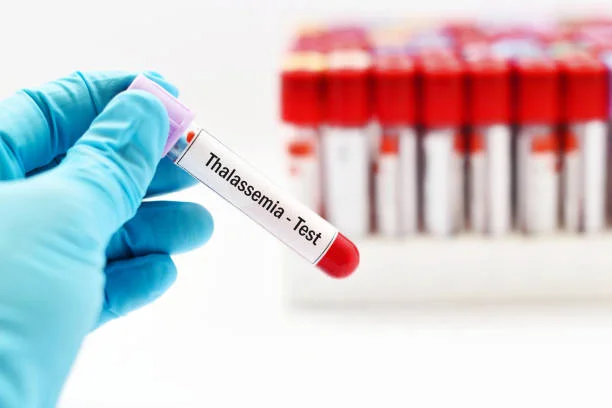

Dr. Anoop P, Sr. Consultant – Haematology, Haemato-Oncology, Paediatric Haemato-Oncology & Bone Marrow Transplant, Aster International Institute of Oncology, Aster RV Hospital
Thalassemia is a group of inherited blood disorders characterized by abnormal hemoglobin production, leading to anemia and other complications. While significant progress has been made in understanding and managing thalassemia, creating awareness about the condition remains paramount. This article explores the causes, treatment options, and the importance of raising awareness about thalassemia.
What Causes of Thalassemia:
Thalassemia is caused by mutations in the genes responsible for producing hemoglobin, the protein in red blood cells that carries oxygen. These genetic mutations disrupt the normal production of hemoglobin, leading to the characteristic symptoms of thalassemia. The condition is inherited in an autosomal recessive pattern, meaning that both parents must carry the mutated gene for a child to inherit thalassemia.
What are the types of Thalassemia:
There are several types of thalassemia, including alpha thalassemia and beta thalassemia, which are further classified based on the severity of symptoms. Alpha thalassemia occurs when there is a mutation in one or more of the four alpha globin genes, while beta thalassemia results from mutations in the beta globin gene.
What are the symptoms of Thalassemia:
The symptoms of thalassemia vary depending on the type and severity of the condition. Common symptoms include fatigue, weakness, and shortness of breath, often accompanied by pale or yellowish skin tone. In children, thalassemia may lead to delayed growth and development. Additionally, individuals with thalassemia may experience an enlarged spleen and liver, contributing to abdominal discomfort. In severe cases, bone deformities may occur, further complicating the condition.
What are the Treatment Options:
While there is currently no cure for thalassemia, various treatment options are available to manage the symptoms and improve quality of life:
Blood Transfusions: Regular blood transfusions are often used to alleviate anemia and provide the body with healthy red blood cells.
Iron Chelation Therapy: Excessive iron accumulation due to frequent blood transfusions can lead to organ damage. Iron chelation therapy helps remove excess iron from the body.
Bone Marrow Transplantation: For severe cases of thalassemia, a bone marrow transplant may be considered to replace faulty stem cells with healthy ones.
Medications: Certain medications may be prescribed to stimulate the production of fetal hemoglobin or to reduce the absorption of dietary iron.
Why is it Important to create Awareness on Thalassemia ?
Raising awareness about thalassemia is crucial for several reasons:
Early Diagnosis: Increased awareness can lead to early detection of thalassemia carriers and affected individuals, allowing for timely intervention and management.
Genetic Counseling: Awareness initiatives help educate individuals and families about the genetic risks associated with thalassemia and the importance of genetic counseling before planning a family.
Access to Care: Improved awareness can facilitate better access to specialized care and treatment options for individuals living with thalassemia, particularly in regions with limited healthcare resources.
Reducing Stigma: Creating a supportive and understanding environment can help reduce stigma and discrimination against individuals affected by thalassemia and their families.
Advocacy and Research: Increased awareness can drive advocacy efforts and funding for thalassemia research, leading to advancements in treatment modalities and ultimately, a cure for the condition.
To sum it up, Thalassemia is a complex and challenging condition that affects millions of people worldwide. Bone Marrow transplant is the only treatment which curesthalassemia. However, it is not done very often because of the significant risks involved. Early diagnosis, proper management, and raising awareness about the condition are crucial steps towards improving outcomes and enhancing the quality of life for individuals affected by thalassemia. By working together to educate communities, promote genetic screening, and advocate for better care and support services, we can make a meaningful difference in the lives of those living with thalassemia and their families.





